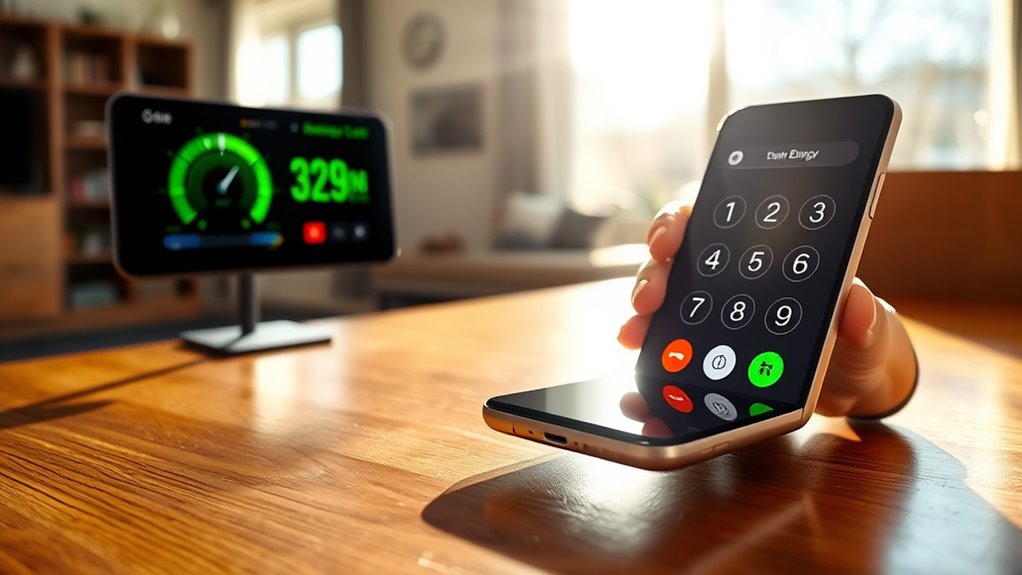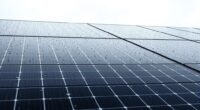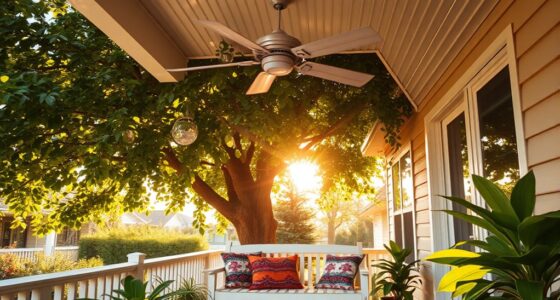By making a single free call to your utility company or local program, you can access energy assessments that identify areas to cut costs. These assessments reveal leaks, inefficient appliances, and potential upgrades. They often come with rebates or incentives for smart upgrades like LED bulbs or smart thermostats. Plus, simple behavioral changes can make a big difference. Keep exploring how these steps can considerably reduce your bills and boost your savings over time.
Key Takeaways
- Schedule a free home energy assessment through your utility company to identify inefficiencies and upgrade opportunities.
- Use recommendations from the assessment to seal leaks, upgrade to energy-efficient appliances, and implement smart home tech.
- Install LED lighting and smart devices to control energy use remotely and reduce unnecessary consumption.
- Take advantage of utility rebates and federal incentives for renewable energy systems and appliance upgrades.
- Monitor your energy usage regularly and adopt simple behavioral changes to maintain long-term savings.
Recognizing the High Cost of My Energy Bills
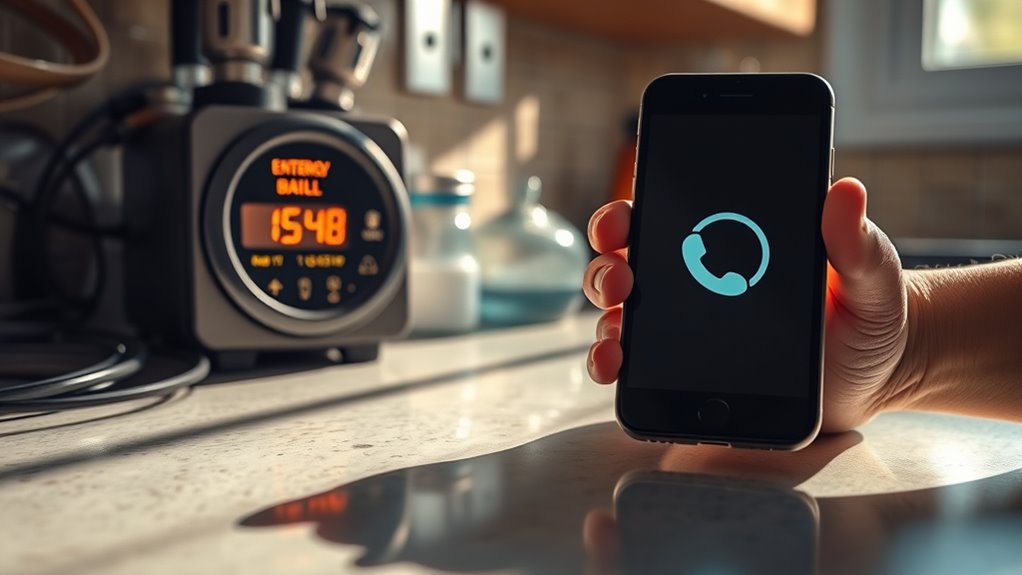
Have you ever wondered just how much your energy bills are costing you each month? You might be surprised to find that high costs often stem from outdated appliances and lack of renewable energy sources. When your appliances aren’t efficient, they drain more power, increasing your bills unnecessarily. Recognizing this is the first step toward saving. Switching to appliances with better efficiency ratings or incorporating renewable energy options, like solar panels, can considerably cut costs over time. Many households overlook these opportunities, paying more than they need to. By understanding how much energy you use and where it’s going, you can identify areas to improve. Realizing the high expense of your current energy setup motivates you to explore smarter, more sustainable solutions. Paying attention to appliance efficiency can help you further reduce unnecessary energy consumption and costs.
Finding Out About Free Energy Assessments

Discovering free energy assessments can be a game-changer in reducing your energy bills. These assessments help you identify ways to improve energy conservation and maximize the use of renewable sources. When you schedule one, a professional will evaluate your home’s energy efficiency, pointing out areas where you’re losing heat or wasting electricity. They often provide tailored recommendations for upgrades or behavioral changes that can save you money long-term. Many utility companies or local government programs offer these assessments at no cost, making them a smart first step. Not only will you learn about potential improvements, but you’ll also gain insight into how renewable sources can supplement your energy needs. Taking advantage of free assessments puts you on the path to smarter energy use and lower bills. Additionally, understanding the importance of energy-efficient products can further enhance your savings and environmental impact.
Making the Call: What to Expect

When you make the call to schedule your free energy assessment, you’ll quickly find that the process is straightforward and designed to be helpful. During the call, a friendly representative will discuss your energy usage and explain available utility programs that could save you money. They’ll ask about your current energy habits and any concerns you have about your bills. Expect to schedule a convenient time for the energy consultation, which typically takes place at your home. The representative may also provide information on rebates or incentives you qualify for. The goal is to gather enough details to tailor recommendations for reducing your energy costs. Additionally, understanding cost of divorce and related financial considerations can help you better plan for your financial future post-assessment. Overall, the process is simple, informative, and set up to ensure you get the most benefit from the free assessment.
The Home Energy Audit Process Explained

Curious about what happens during a home energy audit? During the process, a professional evaluates your home’s energy efficiency and identifies areas where you can improve. They’ll typically:
- Inspect your insulation, windows, and doors for leaks.
- Check your heating and cooling systems for efficiency.
- Examine appliances and lighting for energy use.
- Use specialized tools like blower doors and thermal cameras to detect hidden drafts and heat loss.
- Assess energy efficiency features of your home to maximize savings.
This thorough assessment reveals how your home uses renewable resources and where energy efficiency can be boosted. The goal is to pinpoint cost-effective improvements that reduce your utility bills and environmental impact. By understanding this process, you’ll see how a simple audit can lead to smarter energy consumption and savings.
Simple Changes That Made a Big Difference
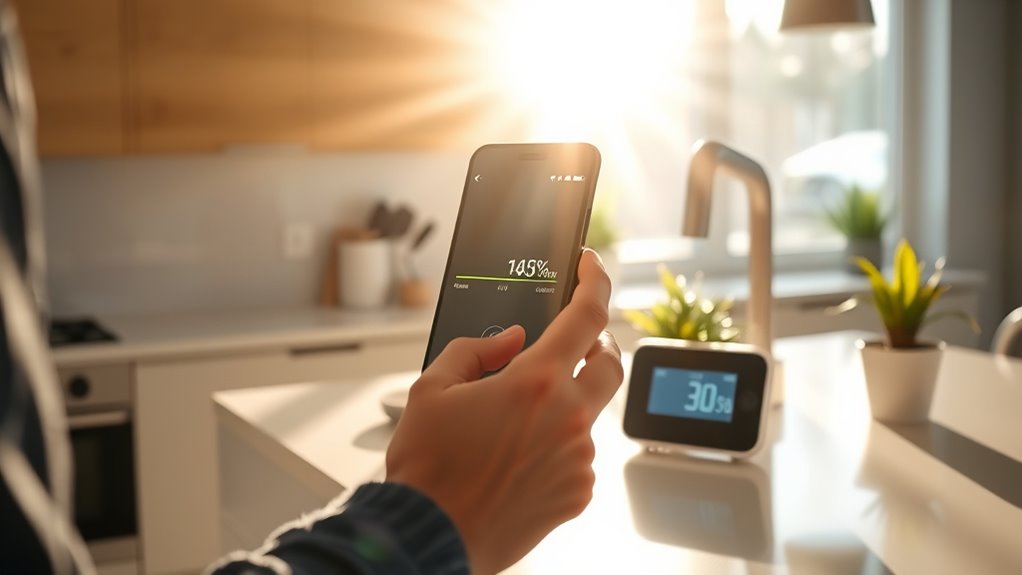
Small tweaks can lead to big savings, starting with adjusting your thermostat to save energy when you’re away or asleep. Sealing air leaks around windows and doors prevents drafts that waste heat and cool air. These simple changes make your home more efficient without much effort or cost.
Adjust Thermostat Settings
Adjusting your thermostat settings might seem like a minor change, but it can substantially reduce your energy bills. Proper thermostat programming and ideal temperature settings make a big difference. Here are four tips to get started:
- Set your thermostat lower in winter and higher in summer to save energy.
- Use a programmable thermostat to automatically adjust temperature when you’re away or asleep.
- Keep the temperature at around 68°F when you’re home and awake, and lower it when you’re gone.
- Avoid frequent thermostat adjustments; consistent temperature settings boost efficiency.
- Incorporating smart home devices can further optimize your thermostat management and enhance energy savings.
Seal Air Leaks
Did you know that sealing air leaks can substantially lower your energy bills? Small gaps around windows, doors, and ducts waste heated or cooled air, causing your system to work harder. Start with window insulation to prevent drafts, and check duct sealing to stop leaks in your HVAC system. Here’s a quick overview:
| Leak Location | How to Seal | Benefits |
|---|---|---|
| Windows | Use weatherstripping or caulk | Keeps warm/cool air inside |
| Doors | Install door sweeps | Prevents drafts |
| Ducts | Seal with mastic or foil tape | Improves HVAC efficiency |
| Attic Vents | Add weatherstripping | Reduces heat loss |
| Electrical Outlets | Use foam gaskets | Stops drafts around outlets |
Sealing these leaks is an easy, effective way to save on energy costs. Additionally, incorporating home organization strategies such as creating designated zones and utilizing vertical storage can help you maintain a more energy-efficient and clutter-free environment.
Installing Free or Low-Cost Energy-Saving Devices
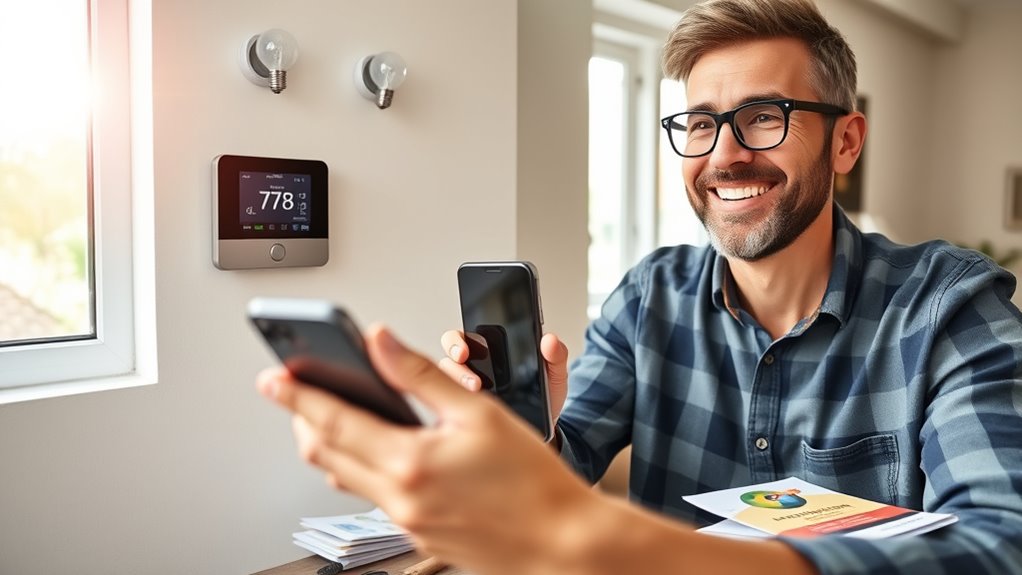
You can start saving immediately by using smart power strips that cut power to devices when they’re not in use. Upgrading to LED bulbs is another simple step that lowers your lighting costs without sacrificing brightness. These low-cost devices make a big difference in reducing your energy bills. Embracing creative practice in your daily routines can also lead to innovative ways to conserve energy and optimize your home environment.
Smart Power Strips
Have you considered how smart power strips can substantially reduce your energy consumption? These devices optimize power management and automate device shutdowns, saving you money. Here are four ways they help:
- Auto-Off Features: Turn off multiple devices when not in use, preventing phantom loads.
- Scheduled Power: Program on/off times for electronics, reducing unnecessary energy use.
- Remote Control: Manage devices remotely via smartphone, ensuring appliances aren’t wasting energy.
- Energy Monitoring: Track power consumption to identify energy hogs and adjust usage accordingly. Privacy Policy is also important to understand how your data from these devices might be protected.
Smart power strips make device automation simple, ensuring your electronics only draw power when needed. By integrating these into your home, you maximize savings while reducing your carbon footprint—all with minimal effort and low or no cost.
LED Bulb Upgrades
Upgrading to LED bulbs is one of the simplest ways to cut your energy costs without spending much. LED upgrades are affordable and often free through rebates or local programs, making them a smart choice for energy savings. Switching to LED bulbs reduces electricity usage, especially since they last longer and consume less power than traditional incandescent bulbs. You can enhance your home’s efficiency further by incorporating smart lighting systems, which allow you to control lighting remotely and set schedules. With smart lighting, you avoid wasting energy when rooms are empty. These upgrades not only lower your bills but also add convenience and modernize your home. Overall, LED bulb upgrades are a straightforward, effective step toward significant energy savings. Incorporating energy-efficient lighting fixtures can further optimize your home’s energy efficiency and reduce costs.
Taking Advantage of Utility Incentives and Rebates
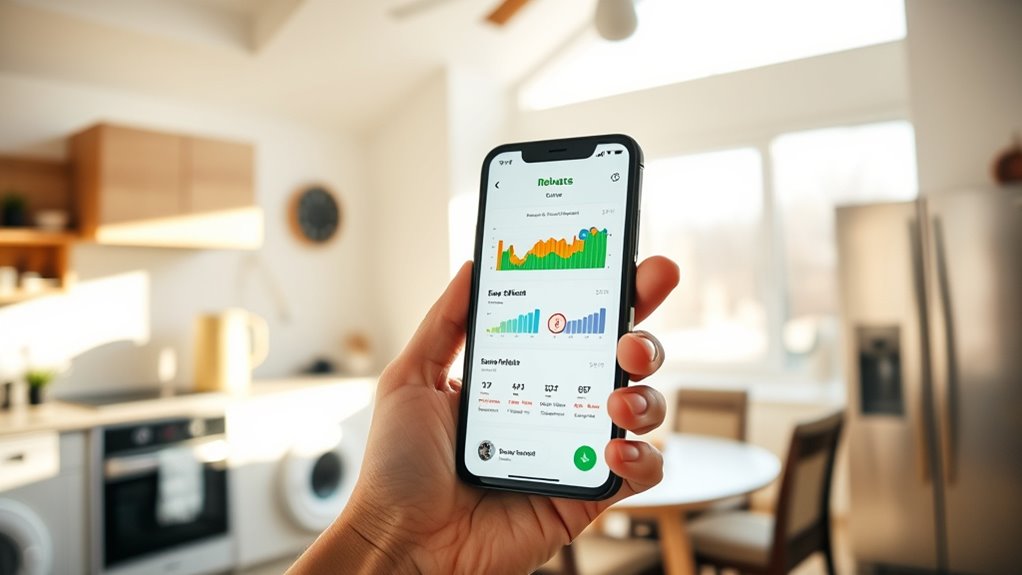
Taking advantage of utility incentives and rebates can substantially reduce the upfront costs of energy-efficient upgrades. Utility companies often offer cash-back programs or discounts for installing renewable energy systems or upgrading to energy-efficient appliances. These incentives make switching to greener solutions more affordable. To maximize savings:
- Check your utility company’s website for current rebate programs.
- Contact customer service to clarify eligibility and application processes.
- Explore federal or state incentives that complement utility rebates.
- Keep detailed records of upgrades and receipts for easy claim submission.
- Be aware that energy efficiency benefits can lead to long-term savings on your utility bills.
Tracking My Progress and Saving Money
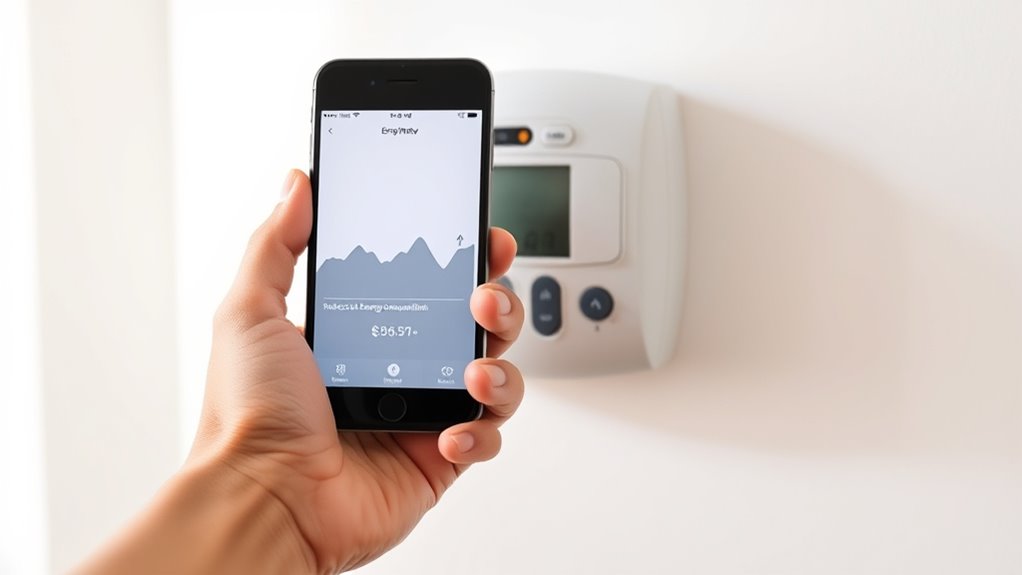
After securing utility incentives, the next step is to monitor your progress and track your savings. Installing simple energy monitoring tools helps you see how your actions impact your energy use. Regularly reviewing your energy consumption data allows you to identify patterns and areas where you can improve. Keep a record of your monthly bills to measure your cost reduction over time. This tracking keeps you motivated and highlights the effectiveness of your efforts. By staying engaged with your energy monitoring, you gain a clear picture of how small changes add up to significant savings. Consistently tracking your progress ensures you stay focused on reducing costs and maintaining your energy-efficient habits, making it easier to sustain your savings long-term.
Tips for Others to Reduce Their Energy Expenses
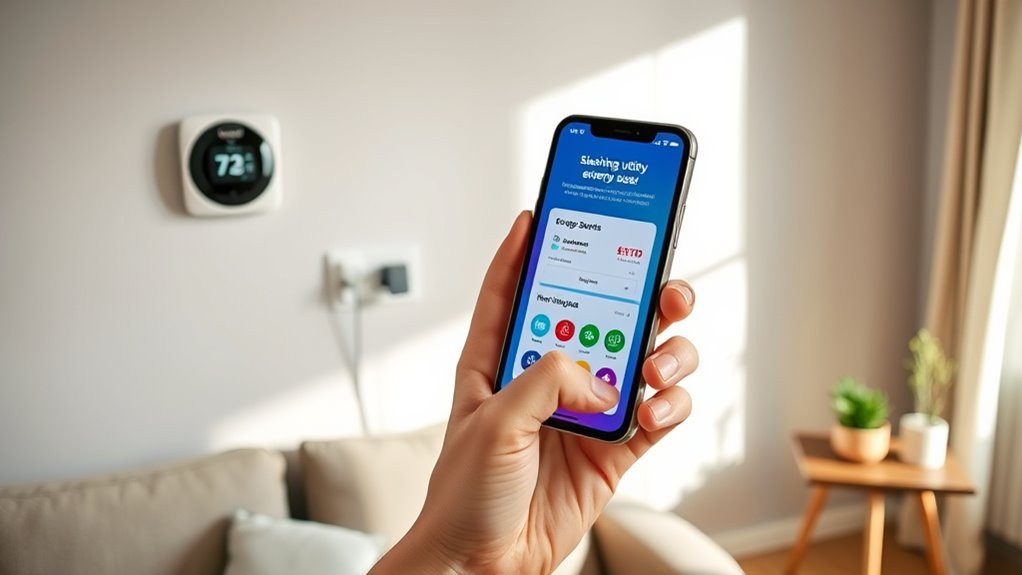
One of the most effective ways to cut your energy expenses is to adopt simple habits that reduce unnecessary use. Start by integrating home automation systems to control lighting, heating, and appliances remotely, ensuring you only use energy when needed. Second, consider investing in renewable energy sources like solar panels; they can substantially lower your electric bills over time. Third, set your thermostat a few degrees lower in winter and higher in summer to save energy without sacrificing comfort. Ultimately, unplug devices and chargers when not in use, as they draw power even when idle. These small changes, combined with smart technology, can make a big difference in your monthly expenses and help you move toward a more sustainable, cost-efficient lifestyle.
Frequently Asked Questions
How Long Does a Typical Energy Audit Take?
A typical energy audit usually takes about 2 to 4 hours, depending on your home’s size and complexity. The assessment timeframe includes a thorough evaluation of your energy use, insulation, windows, and appliances. During the audit, the professional inspects your systems and discusses potential improvements. You can expect a detailed report afterward, helping you understand how to save energy and reduce costs effectively.
Are There Any Hidden Costs Involved in the Process?
They say, “forewarned is forearmed,” so you’ll want to know if hidden fees lurk. Usually, the process involves no hidden costs, and reputable auditors are transparent about billing. However, always ask upfront to avoid surprises. Some providers might have service charges or extra fees for additional assessments. To keep billing surprises at bay, clarify all costs before signing anything, ensuring your savings stay intact and transparent.
Can I Choose Specific Areas to Focus On?
You can definitely choose specific areas to focus on with targeted upgrades and a regional focus. When you work with the program, you have the flexibility to identify where improvements will make the biggest impact. Whether it’s attic insulation or upgrading windows, you control the prioritization. This tailored approach helps maximize savings, so you get the most benefit from your energy-efficient upgrades without unnecessary expense.
What Should I Prepare Before the Energy Assessment?
They say “forewarned is forearmed,” so prepare for your energy assessment by gathering details about your home insulation and appliance efficiency. Have recent utility bills handy, note areas where drafts occur, and list outdated appliances. This way, you can focus on key improvements. Being prepared helps the assessor identify cost-saving opportunities, making the process smooth and effective, ultimately helping you cut energy costs even further.
How Soon Will I See Savings After Making Changes?
You’ll often see savings within a few billing cycles after making changes, especially when you explore renewable options and compare utilities. Switching to more efficient systems or renewable energy sources can start reducing costs quickly. By reviewing your utility comparison, you’ll identify the best deals and strategies to maximize savings. Keep track of your energy bills to see the impact, and enjoy the long-term benefits of smarter energy choices.
Conclusion
By taking that simple step, you’ve opened the door to significant savings without much fuss. A quick call can lead to gentle improvements that quietly boost your comfort and trim your bills. Think of it as giving your home a friendly tune-up—small changes, big results. So, why not explore this easy opportunity? You might find that a little effort now can make your energy expenses much more manageable, all while keeping things cozy and efficient.
